Scythe training
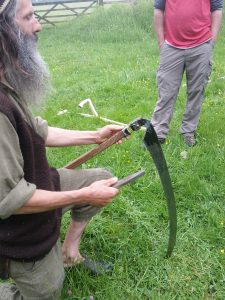
A May bank holiday Saturday, West Wales, and it was drizzling. Probably like most people I had preconceptions of scything as an activity performed by farm labourers in blazing sunshine, when the hay would dry best. Not the full Poldark maybe, but something similar. Like most preconceptions, it proved to be wrong in all important respects.
I had long hankered after developing two traditional skills: dry stone walling and scything. I met my needs for dry stone walling a few years ago, courtesy of the National Trust, but this May bank holiday was my opportunity to address the other. My particular need that encouraged me to move this year was planting 1300 willow and poplar as short rotation coppice, and the need to keep the grass down during year one.
Scythe Cymru, based at the Dyfed Permaculture Trust land in Penboyr, about 16 miles north west of Carmarthen run courses in scything, and sharpening and maintaining scythes, as well as providing a sharpening service used by scythe owners across the country.
Even some local councils have adopted the scythe as a replacement for brushcutters. As one council reported, the maintenance staff love them, as unlike using brush cutters they don't get sprayed with dog poo! It is quiet, requires no petrochemicals to run and is enjoyable and easy to use. The scythe can be used instead of a strimmer or mechanical mower for everything from mowing meadows to clearing brambles, with equal if not better results and no uncomfortable mechanical vibrations.
The course I attended, the first of the year, had around 8 trainees, evenly split between men and women. Trainees with their own scythes are welcome, but they do provide all equipment necessary, and it's available to buy, if you wish, at the end of the course. Scythe Cymru use the Austrian Sythe as standard. The Austrian Scythe is much lighter than a traditional English Scythe, and is very easy to set up for the physique of the user. The snath (the main shaft of the scythe) comes in several different sizes, and is predrilled with a series of holes for fitting the two handles to suit the height and build of the user. A wide range of blades are available, to suit the type of work, and the design of the Austrian Scythe makes it very easy to switch between longer meadow blades, and shorter "close quarters" work.
Before I attended the course, Meirion, a friend of mine with experience of scything in his youth (and the scars from careless sharpening to prove it), gave me an old traditional scythe to use. Well intentioned though that was, there were a couple of problems, that without the course I wouldn’t have known, and which could have put me off using a scythe for life! The old scythe was designed for someone much shorter than me (as most people were when the scythe was made), and lacked the easy adjustability of the Austrian Scythe. It had obviously been painted and hung on someone’s wall for years, decades even; restoring the blade to usable condition would take many hours of work.
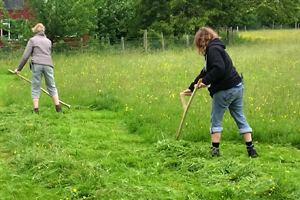 Our trainers, Phil Batten and Michelle Laine, started the course by finding out our prior experience (very little), and what type of usage we had in mind, and then had us stand in a line in height order. This information was used to give us each the right size of snath, and the most appropriate type of blade. In my case, since I was going to be doing close quarters work, between rows of young willow, I was given a 65cm blade, rather than the 90cm blade I might have had for cutting acres of grass for hay.
Our trainers, Phil Batten and Michelle Laine, started the course by finding out our prior experience (very little), and what type of usage we had in mind, and then had us stand in a line in height order. This information was used to give us each the right size of snath, and the most appropriate type of blade. In my case, since I was going to be doing close quarters work, between rows of young willow, I was given a 65cm blade, rather than the 90cm blade I might have had for cutting acres of grass for hay.
Once we had assembled our scythes, and been shown the correct stance and the basic technique, we started trying to cut grass. The difference between our tutor (lawn-short grass cut even shorter with every effortless stroke) and each of us novices (celebrating if a couple of blades surrendered to our tentative swings) could not have been more extreme, or perplexing. But when we moved out into the meadow and started cutting longer grass, and learnt how to keep the blade in close contact with the ground, it gradually started to make sense and yield better results. Back to the preconceptions…. it turns out that light drizzle, or residual early morning dew, gives the best results: wet grass cuts much better than dry grass. The next lesson to learn was that the best results are obtained by sliding past the grass: more like using a saw on a piece of wood, rather than at 90 degrees, cutting grass like a mower blade. Before long we were all achieving creditable results, as several cm at a time fell to our every swing as we walked slowly across the meadow.
At the end of the course, we had the option to buy our scythes, if we wished. When back home and faced with the narrow spacing of my rows of willow, I had to invent my own technique with a very short swing. Before long I had twelve rows of grass cut, and not a single young willow damaged.
The same results could have been achieved with a brushcutter. But that would have involved wearing eye and ear protection, using petrol, and in a strange way being an interloper in the environment, not a part of it. Using the scythe was fun, satisfying, probably as quick as using a brushcutter, no more effort than using a brushcutter, and while doing so the environment could be enjoyed, the birds could be heard, the butterflies were not disturbed…. If you have many acres of meadow to cut for hay, or haylage, mechanisation will save time and effort. Sometimes, on a more human scale, the old ways are the best!
Adjustment on the Austrian Scythe
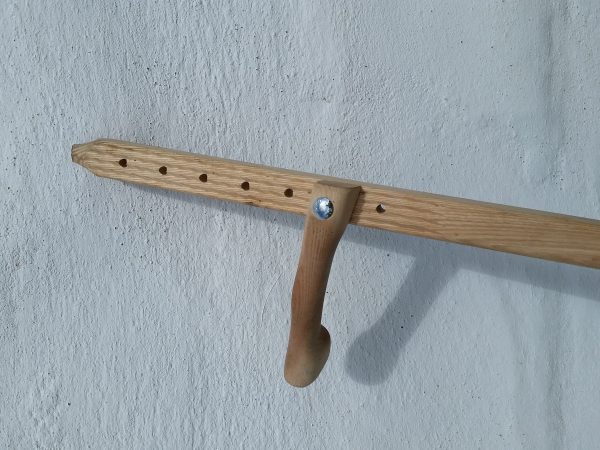
Austrian and english scythes
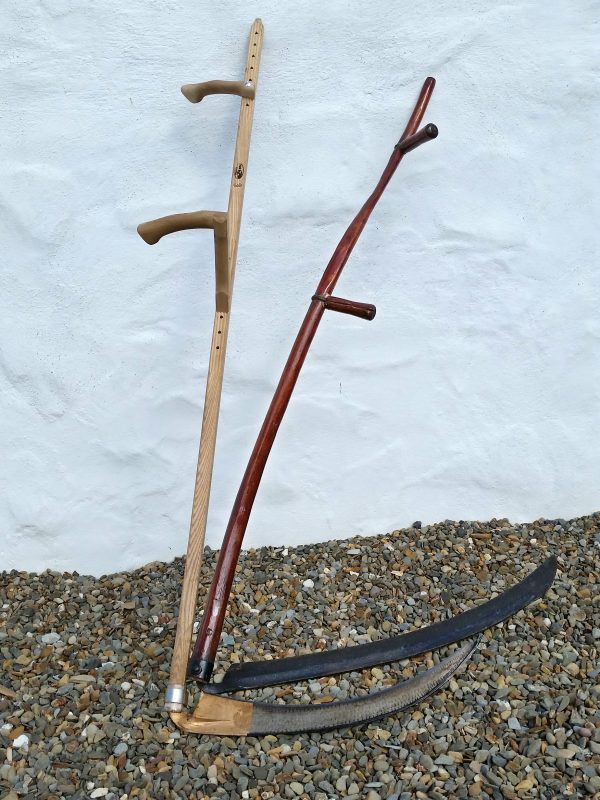
Getting results
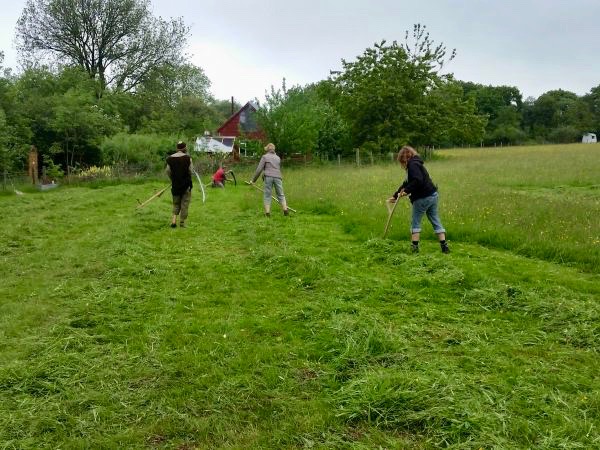
Comments are closed for this post.

Interested in learning how to scythe and also if there is any one experienced to help me at my smallholding. Thanks
Susan
Susan
24 June, 2018